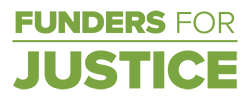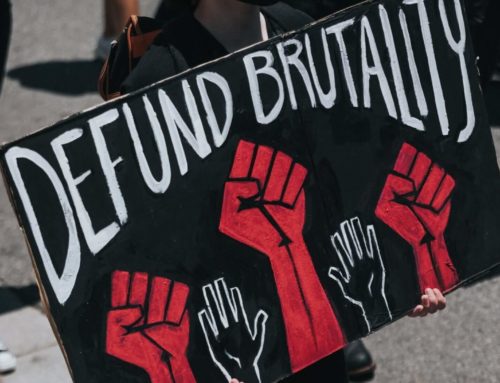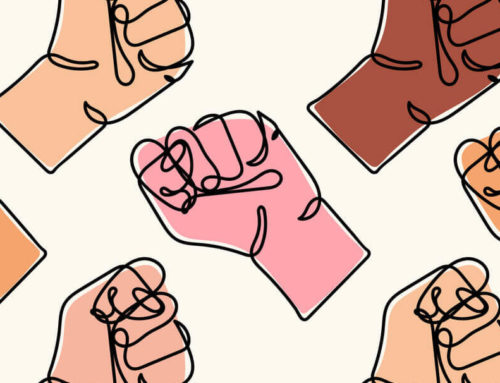By Austin Belali
Nonprofit Quarterly – March 22, 2016
This piece is part of our ongoing Equity, Diversity, and Inclusion (EDI) Project created to spotlight millennials’ voices and thoughts on diversity and justice. We urge you to read how this project came together in collaboration between NPQ and the Young Nonprofit Professionals Network and about the ideology behind this series. We intend to publish another 20 pieces in the upcoming months. Readers will be able to subscribe to an RSS feed to follow articles as they are published, approximately every two weeks. NPQ and YNPN will be using the hashtag #EDISeries, so post about the series along with us.
To stay informed of the project, we also encourage readers to sign up for our daily newsletter, on the right side of this page. If you have any questions or would like more information about the EDI Project, please e-mail shafaq@npqmag.org.
“What we are trying to do is build a democracy,” said Baltimore organizer Tre Murphy to television news crews moments after a sit-in protest at Baltimore’s City Hall. Murphy and fifteen others were arrested at City Hall protesting the death of twenty-five-year-old Freddie Gray, allegedly at the hands of Baltimore police.1
The deaths of Freddie Gray and other unarmed black youth sparked a national yet localized movement that has recruited scores of previously unmobilized young people from underrepresented communities into the policy-making process for the first time. Social justice organizers across the country are activating underrepresented citizens who are the hardest to reach by political campaigns or formal institutions. Using trusted messages and messengers from the communities in which they live, these organizers use traditional civic engagement tactics like voter registration, mobilization, and democracy reform.
The United States is on the verge of an upsurge in democratic participation in cities and communities across the country, but will traditional civic engagement funders take notice?
Young and emerging movement organizers like Tre Murphy and so many others are absent from the grantee lists of major democracy and civic engagement funders, despite their embodiment of the ideals and practices of democracy in their quest for change. The generation of leaders emerging in this still-young century has yet to become the new face of the mainstream civic engagement community. While the leaders of what could be described as a twenty-first-century movement for inclusive democracy are largely women and people of color, civic engagement philanthropy and the organizational leadership it supports is stubbornly the opposite. If our grantmaking had proven particularly effective at rescuing U.S. democracy from restrictions on voting rights, assaults on campaign finance laws, and partisan redistricting in recent years, then perhaps the lack of inclusion of young and diverse movement leaders would seem less unacceptable, but most of us recognize that the movement leaders and social justice organizations they represent may very well be the missing ingredient essential for bringing America’s democratic practices closer to our stated ideals.
Despite the obvious strategic value in harnessing the energy of social justice movements, there are reasons why funders have been slow to support them. Several prominent civic engagement funders share an unspoken worldview that younger Americans and underrepresented communities participate in civic life at lower rates than others because of personal apathy rather than structural barriers deterring their participation. The foundational belief among some funders that nonvoters do not participate simply because they lack a sense of civic responsibility or are ignorant of the process is akin to the framing in economic policy debates that poor people should “pull themselves up by their bootstraps.” On the other hand, social justice organizations like the Advancement Project have rightly acknowledged how the efforts of extremists to undermine the right to vote, coupled with the outsized voice of moneyed interests and the lack of accountability by governing institutions, have largely contributed to current levels of low participation.2 There is quantitative—if limited—evidence for both explanations (individual and structural) of civic inequality in America to justify these deeply held beliefs about nonparticipation. This worldview governing institutional and individual donors’ conclusions about why marginalized communities are participating less than other groups has very real consequences with respect to how decisions are made about which groups and what strategies get funded.
Many civic engagement and pro-democracy funders also have an incomplete interpretation of American history that understates the importance of social justice in achieving democratic outcomes. The United States was, paradoxically, founded on both democratic ideals and the racist institution of slavery. While formal democratic processes in American history have been about checks and balances, the separation of powers, and protecting civil liberties, democracy has also been the terrain of struggle for social progress and inclusion by those at the margins of our society. Social justice, therefore, is a precondition for achieving full participation and healthy democratic practice in the United States. There is perhaps no greater example of this than the African-American struggle for democracy and inclusion and the demand for an end to racially motivated disenfranchisement. Too many civic engagement funders have ignored the complicated racial history of the United States and the role that racial hierarchies continue to play in creating current patterns of political inequality among underrepresented communities. The funding community that supports a movement for strengthened democracy and the funding community that supports the movement for racial and social justice exist separately from one another, despite the fact that, as Manning Marable points out in his article “Structural Racism and American Democracy,” in assisting “the development of community-based initiatives that have the capacity to educate and mobilize those who suffer from racial oppression…we may make an important contribution toward the reconfiguration of American democracy itself .”3 The issue of race and racism in American is polarizing, so it is likely that the conflict aversion of some civic engagement funders and their boards makes it difficult to support social justice as a core strategy toward strengthened democratic ideals, institutions, and practices. But an evidence-based approach to grantmaking would acknowledge that social justice issues like criminal justice reform or gender justice can be key motivators for civic and political engagement. For example, we know that among young voters, issues are stronger motivators of participation than candidates, which speaks to one possible reason why social justice organizations are so effective at mobilizing young people to participate.4
While the private sector is beginning to innovate with forms of patient capital, where investors are willing to sacrifice short-term returns for a bigger payoff down the road, civic engagement funding—even of the nonpartisan sort—maps closely to boom-and-bust electoral cycles. Funders often feel pressured to report immediate success over a twelve-month or eighteen-month grant period. This makes it difficult to measure returns on funding aimed at building the core civic engagement capacities of social justice organizations.
As Alice Walker once said, “The most common way people give up their power is by thinking they don’t have any.” Capacity building in underrepresented communities, including African Americans, immigrants, LGBTQ, and low-income whites in rural areas, requires year-round funding support that stretches beyond the boom-and-bust cycle of elections. Rather than funding the capacity of trusted, local community-based organizations, a disproportionate amount of grantmaking dollars flows to short-term voter registration and mobilization efforts. In North Carolina, the Southern Vision Alliance, an exciting collaboration of youth and student organizations with a track record of success, struggles to secure general operating support, even in a swing state. Voting is a form of binding, empowered decision-making that can have the effect of increasing confidence among underrepresented communities that their participation can make a difference. Creating a culture of voting and democratic participation in underrepresented communities requires investments in year-round advocacy and organizing capacity of groups, like the Southern Vision Alliance, whose primary issues may not be democracy reform or voting rights. The kinds of organizations that engage marginalized communities on a year-round basis are often groups with a larger social-justice-related mission in which voter registration, mobilization, and democracy reform are only strategies for reaching larger goals; direct action may be another among them. For example, United We Dream, an undocumented immigrant youth organization, is using civic engagement as a tactic even though the members themselves cannot vote. The organization is also known for using more disruptive tactics, such as sit-ins and civic disobedience, toward the same aim.
A fundamental shift in the amount of people who feel their civic or political participation will make a difference requires flexible grantmaking from funders that allows room for multiple tactics and strategies to exist at the same time. The shift also requires resource commitments to support leadership development and, dare I say, community organizing beyond the boom-and-bust cycle of elections. This reinforces the importance of civic engagement and democracy funding for states like Arizona or Georgia that do not benefit from the influx of resources into battleground states. The structures of exclusion and inequality that weaken the strength of U.S. democracy were built over long periods of time, and it will take patient, place-based funding that includes social justice organizations to overturn them.
Recently, a wave of new funders from Silicon Valley, like those at Open Philanthropy, have tiptoed into the world of philanthropic giving for the first time, supporting community-based organizations that have a social justice frame to catalyze the impact of their giving. Despite valid concerns about their growing influence, these younger funders have shown a willingness to invest their resources in groups that are multi-issue, employ multiple tactics to reach their goals, and have leadership that reflects the diversity of the current movement moment. Civic engagement and democracy funders must likewise recognize that our grantmaking can have a larger impact by being nimble, collaborative, and more patient about our investments in systemic change.
Rather than risk backlash from influential donors or appear too committed to one side of a debate, funders may be tempted to steer clear of supporting organizations that appear to take positions on controversial issues like police accountability or fair wages for immigrant farmworkers. There are even some institutional civic engagement donors who may be afraid to be caught at the same meetings as key movement leaders for fear of jeopardizing their nonpartisan status. But this risk-averse approach, unlike that taken by Open Philanthropy and others, is unlikely to yield big results over time. By not supporting the most vibrant social justice organizations in the country, which can bring new insight and perspectives to our grantmaking, civic engagement funders may be quietly working against their own goals.
Of course, this is not the first time that funders concerned with the strength of U.S. democracy have had to choose sides and take risks. When volunteers worked in Mississippi to register black voters for the first time, they faced economic reprisals from the Southern power structure.5 Many community leaders lost their jobs and their land. But foundations provided critical funding to scale up voter mobilization campaigns in the Deep South, like those that supported the 1964 Mississippi Freedom Summer Project. Civic engagement funding does not have to be partisan to support organizations that take a public stance on what may be politically charged issues.
By funding the intersections between social justice and democracy, a growing number of forward-thinking civic engagement and democracy funders are addressing the root causes of the civic empowerment gap in underrepresented communities that have been ignored for far too long. At the October 2015 Funders’ Committee for Civic Participation (FCCP), which focused on harnessing the power of social movements for democratic revival in the United States, Gara LaMarche, president of the Democracy Alliance, said, “I believe I was so wrong to erect a wall, in our funding at Open Society some years ago, between criminal justice and democracy work. I don’t think that distinction, however misguided it may have been in the past, can be maintained any longer in the wake of Ferguson and similar events, where we have seen the close interplay of political exclusion—the kind of American apartheid in which majority Black communities are governed and policed by whites, financing the mechanisms of their own oppression through fees and fines—and violence.”6
The reasons underrepresented communities do not vote and disproportionately face barriers to equal voice in this society are directly tied to mindsets, structures, and behaviors that disadvantage them in all other facets of life (economic exclusion, discrimination, et cetera).7 The institutional silos that prevent grantmakers from seeing the interconnectedness between forms of social injustice and democratic participation only make us less effective in the long run.
The Youth Engagement Fund (YEF) is supporting research on a variety of topics that can be studied experimentally, which could aid in introducing more funders to the work of social justice organizations improving civic and political participation over time. Other civic engagement funders associated with the FCCP are beginning to explore best practices on more integrated approaches to voter engagement, to include issue-based education and registration.8 These integrated approaches that lead with social justice issues require more research but are likely to inspire greater participation among younger Americans and move them to action.
Ultimately, no amount of research can replace an honest accounting of our nation’s history, an ability to see the structural barriers to participation among underrepresented groups, and a willingness to fund real change patiently over time for larger impact. Democracy in America was not given to us from on high but was born of struggles of ordinary people staking their claim on the promise of liberty and justice for all. In the face of rising political inequality, voter suppression, and the outsized influence of money in our political system, philanthropy must choose a side. A truly democratic society is a just one.
Notes
- “Message from the #CityBloc #CityHallShutDown,” YouTube video, October 14, 2015.
- “A Universal Right to Vote,” The Opinion Pages, New York Times, March 11, 2013.
- Manning Marable, Structural Racism and American Democracy: Historical and Theoretical Perspectives, United Nations Research Institute for Social Development (UNRISD), “Racism and Public Policy” conference paper, September 3–5, 2001.
- CIRCLE (Center for Information and Research on Civil Learning and Engagement), Tufts University, Jonathan M. Tisch College of Citizenship and Public Service, “2014 Youth Turnout and Youth Registration Rates Lowest Ever Recorded; Changes Essential in 2016.”
- Wesley C. Hogan, Many Minds, One Heart: SNCC’s Dream for a New America (Chapel Hill: University of North Carolina Press, 2009).
- Gara LaMarche, “Control, Disruption and Democracy: Philanthropy’s Role in Inclusive Civic Engagement.” (Adapted from unpublished October 6, 2015 keynote speech at the Funders Committee for Civic Participation [FCCP] conference in Washington, D.C. Note: the quoted text does not appear in the adapted version.)
- Kay Lehman Schlozman, Sidney Verba, and Henry E. Brady, The Unheavenly Chorus: Unequal Political Voice and the Broken Promise of American Democracy (Princeton: Princeton University Press, 2013).
- “Integrated Voter Engagement: A Proven Model to Increase Civic Engagement,” Funders’ Committee for Civic Participation (FCCP), 2009.


